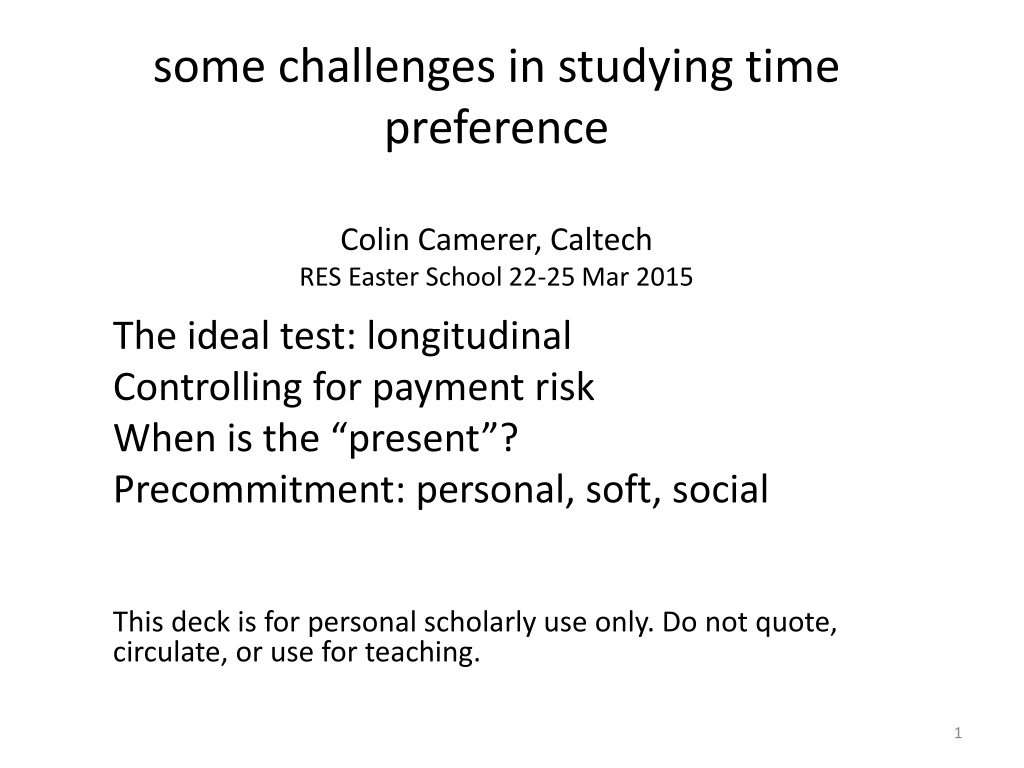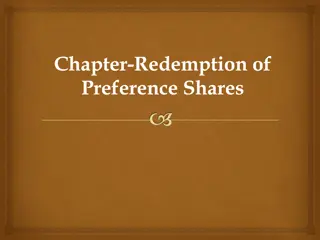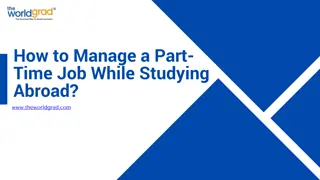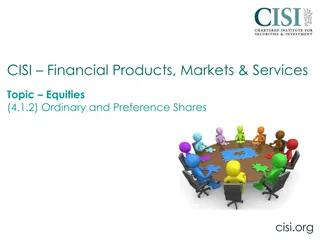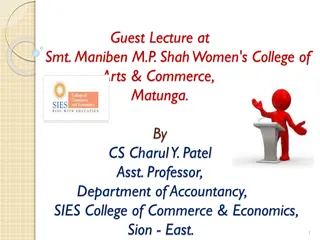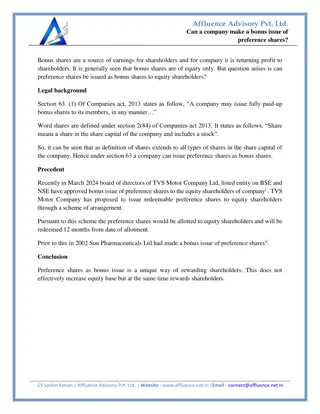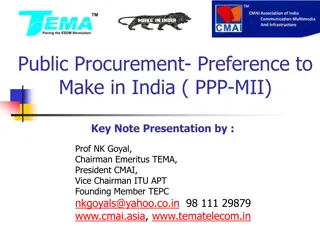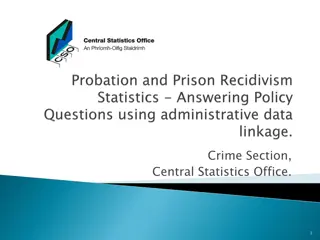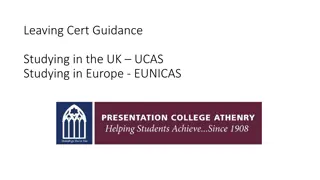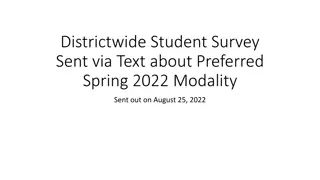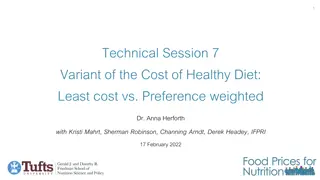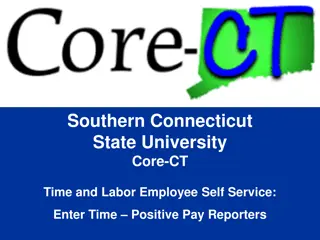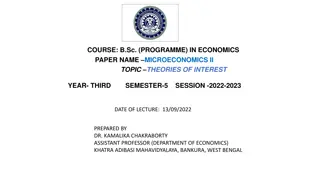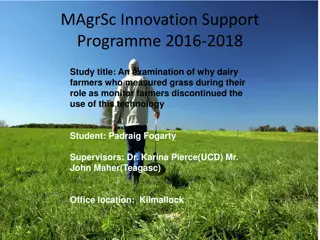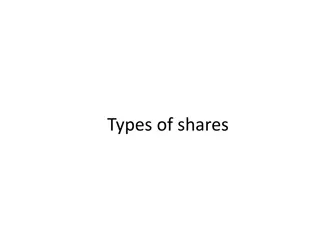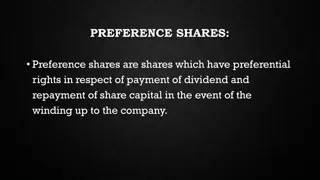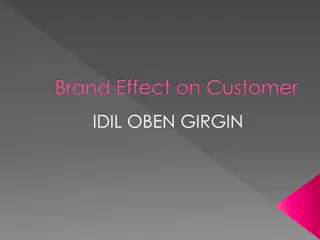Challenges in Studying Time Preference
The content discusses challenges in studying time preference, including the ideal longitudinal test, longitudinal evidence from various studies, controlling for payment risk, and defining the present in temporal decision-making. Various experiments and findings are highlighted, shedding light on the complexities of human time preferences.
Download Presentation

Please find below an Image/Link to download the presentation.
The content on the website is provided AS IS for your information and personal use only. It may not be sold, licensed, or shared on other websites without obtaining consent from the author. Download presentation by click this link. If you encounter any issues during the download, it is possible that the publisher has removed the file from their server.
E N D
Presentation Transcript
some challenges in studying time preference Colin Camerer, Caltech RES Easter School 22-25 Mar 2015 The ideal test: longitudinal Controlling for payment risk When is the present ? Precommitment: personal, soft, social This deck is for personal scholarly use only. Do not quote, circulate, or use for teaching. 1
the ideal longitudinal test Time 0 X or Y later? X Y _______________________ 1 month_________________________2 months Time 1 month _______________________ 1 month_________________________2 months X now or Y later? Y 2
longitudinal evidence The original experiment, by Ainslie and Haendel (1983) with substance abusers, found a high proportion of impatient shifts (87%). Read et al (1999) also showed predominantly impatient shifts, switching from highbrow movies and healthy food, to lowbrow movies and junk food. Read, Frederick, Airoldi (2012) find a roughly equal mixture of patient and impatient shifts over time. Gine* et al (2012) conducted a high-stakes study with villagers in Malawi using a time budget (i.e., allocation of 20 money units to early and late reward dates, worth about one months wages). They find a substantial impatient shift, but only in the subsample exhibiting a static preference reversal in original choices. The outlying result is Sayman and Onculer (longitudinal study 1) who find a large proportion (70%) of patient shifts (i.e., most people switch to the LL reward, not the SS one, when the future arrives). *Their design used a front-end delay: The earliest reward was only available the next day. 3
Controlling for payment risk Perennial concern: present experimental payments are more certain than future ones my view: this is second order why? no evidence for it animal experiments build up credibility (many trials) S s say experimental promises are credible (Kable Glimcher 07) Changes in payment technology (e.g. Amazon, Mturk, Paypal) have not changed results 4
When is the present? My definition: A present reward is expected to be delivered at the earliest technologically feasible opportunity. Inherent conflict with desire to equate payment risk front end delay experiments not present ! Andreoni and Sprenger (2012 AER): On the scheduled day of payment, a check will be placed for delivery in campus mail services by Professor Andreoni and his assistants. By special arrangement, campus mail services has guaranteed delivery of 100% of your payments on the same day. AS: results represent a potential [upper] bound on present bias . 5
Demand for precommitment Sophisticated hyperbolics should demand precommitment Evidence? Mixed Three kinds: Hard personal (e.g. casino self-exclusion, Stickk+) Soft (e.g. weight watchers groups, ROSCA/friendly societies ) Hard social institutions (e.g. social security $) 6
Precommitment: Some experimental evidence Ariely Wertenbroch (JMR 02) students commit to deadlines Casari (JRU 09) 60% of impatient reversers precommit Houser+ (2010) 20% precommit to avoid internet Burger, Lynham (AppEcLet 2010): Bet on weight loss w bookie Wm Hill 80% lose Augenblick+ (QJE in press) effort Bisin Hyndman (2014) 50% precommit deadlines, mostly fail to reach them 7
Subjects are optimistic about task completion (planning fallacy) 10
Other studies FYI Millar, A., & Navarick, D. J. (1984). Self control and choice in humans: Effects of video game playing as a positive reinforcer. Learning and Motivation, 15, 203 218 Fernandez-Villaverde, J. and Mukherji, A. (2000). Can we really observe hyperbolic discounting? Unpublished manuscript, University of Minnesota. Solnick, J. W., Kannenberg, C., Eckerman, D. A., & Waller, M. B. (1980). An experimental analysis of impulsivity and impulse control in humans. Learning and Motivation, 1, 61 77. 11
